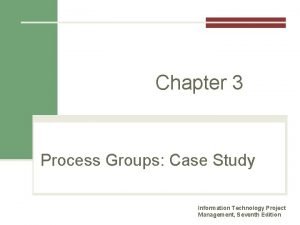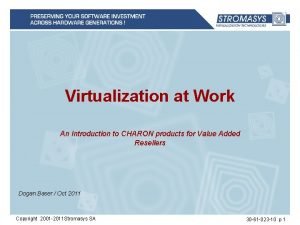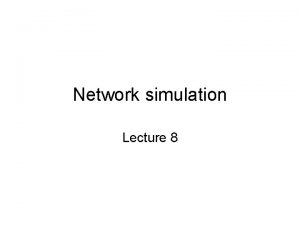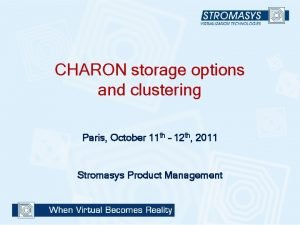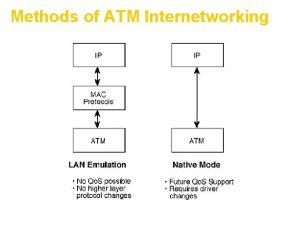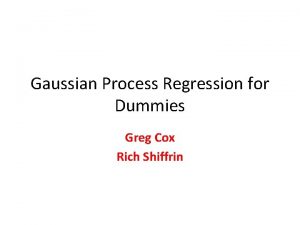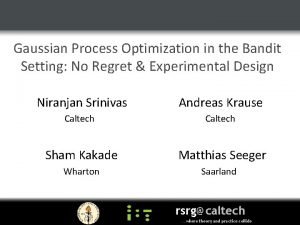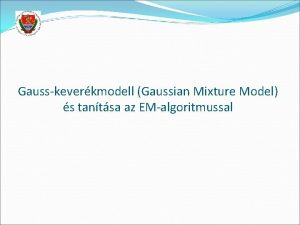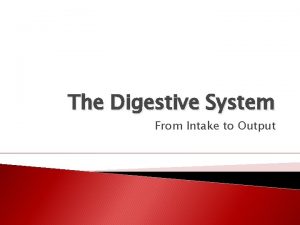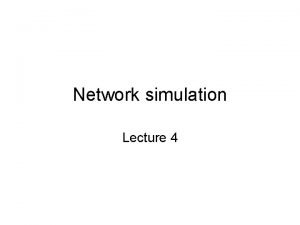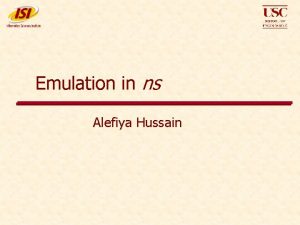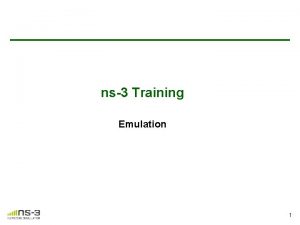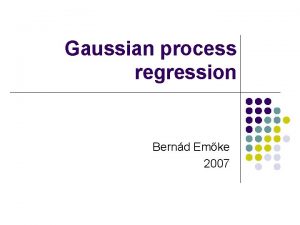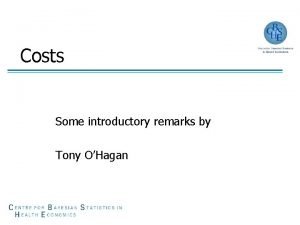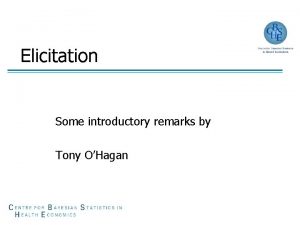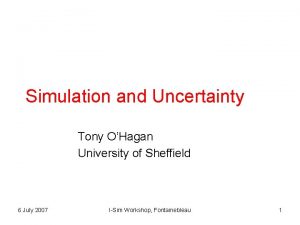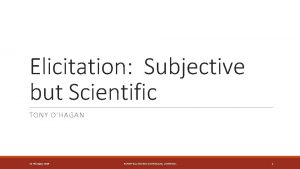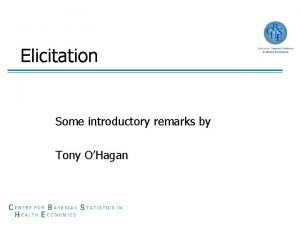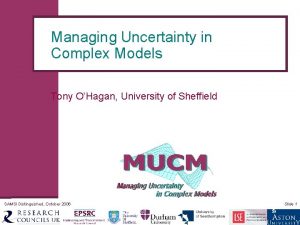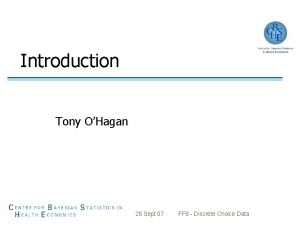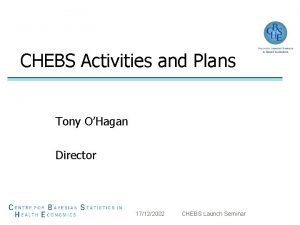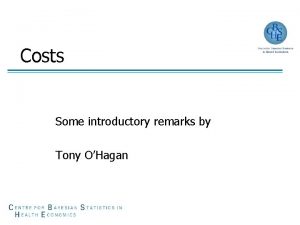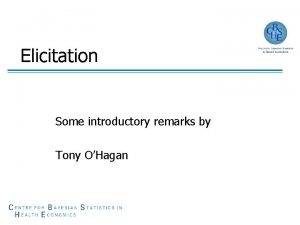Gaussian process emulation of multiple outputs Tony OHagan

















- Slides: 17

Gaussian process emulation of multiple outputs Tony O’Hagan, MUCM, Sheffield

Outline � Gaussian process emulators Simulators and emulators � GP modelling � � Multiple outputs Covariance functions � Independent emulators � Transformations to independence � Convolution � Outputs as extra dimension(s) � The multi-output (separable) emulator � The dynamic emulator � � Which � works best? An example

Simulators and emulators �A simulator is a model of a real process � Typically implemented as a computer code � Think of it as a function taking inputs x and giving outputs y � y = f(x) � An emulator is a statistical representation of the function � Expressing knowledge/beliefs about what the output will be at any given input(s) � Built using prior information and a training set of model runs � The GP emulator expresses f as a GP � Conditional on hyperparameters

GP modelling � Mean function � Regression form h(x)Tβ � Used to model broad shape of response � Analogous to universal kriging � Covariance function � Stationary � Often use the Gaussian form σ2 exp{-(x-x′) TD-2(x-x′)} � D is diagonal with correlation lengths on diagonal � Hyperparameters � Uninformative β, σ2 and D priors

The emulator � Then the emulator is the posterior distribution of f � After integrating out β and σ2, we have a t process conditional on D � Mean function made up of fitted regression h. Tβ* plus smooth interpolator of residuals � Covariance function conditioned on training data � Reproduces training data exactly � Important to validate � Using a validation sample of additional runs � Check that emulator predicts these runs to within stated accuracy � No more and no less � Bastos and O’Hagan paper on MUCM website

Multiple outputs � Now y is a vector, f is a vector function � Training sample � Single training sample for all outputs � Probably design for one output works for many � Mean function � Modelling essentially as before, h i(x)Tβi for output i � Probably more important now � Covariance � Much function more complex because of correlations between outputs � Ignoring these can lead to poor emulation of derived outputs

Covariance function � Let fi(x) be i-th output � Covariance function � c((i, x), (j, x′)) = cov[fi (x), fj(x′)] � Must be positive definite � Space of possible functions does not seem to be well explored � Two special cases � Independence: � No c((i, x), (j, x′)) = 0 if i ≠ j correlation between outputs � Separability: � Covariance c((i, x), (j, x′)) = σij cx(x, x′) matrix Σ between outputs, correlation cx between inputs � Same correlation function cx for all outputs

Independence � Strong assumption, but. . . � If posterior variances are all small, correlations may not matter � How to achieve this? � Good mean functions and/or � Large training sample � May not be possible in practice, but. . . � Consider transformation to achieve independence � Only linear transformations considered as far as I’m aware � z(x) = A y(x) � y(x) = B z(x) � c((i, x), (j, x′)) is linear mixture of functions for each z

Transformations to independence � Principal components � Fit and subtract mean functions (using same h) for each y � Construct sample covariance matrix of residuals � Find principal components A (or other diagonalising transform) � Transform and fit separate emulators to each z � Dimension reduction � Don’t emulate all z � Treat unemulated components as noise � Linear � Fit model of coregionalisation (LMC) B (which need not be square) and hyperparameters of each z simultaneously

Convolution � Instead of transforming outputs for each x separately, consider � y(x) = ∫ k(x, x*) z(x*) dx* � Kernel k � Homogeneous case k(x-x*) � General case can model non-stationary y � But much more complex

Outputs as extra dimension(s) � Outputs often correspond to points in some space � Time series outputs � Outputs on a spatial or spatio-temporal grid � Add � If coordinates of the output space as inputs output i has coordinates t then write fi(x) = f*(x, t) � Emulate f* as single output simulator � In principle, places no restriction on covariance function � In practice, for single emulator we use restrictive covariance functions � Almost always assume separability -> separable y � Standard functions like Gaussian correlation may not be sensible in t space

The multi-output emulator � Assume separability � Allow general Σ � Use same regression basis h(x) for all outputs � Computationally simple � Joint distribution of points on multivariate GP have matrix normal form � Can integrate out β and Σ analytically

The dynamic emulator � Many simulators produce time series output by iterating � Output yt is � Exogenous function of state vector st at time t forcing inputs ut, fixed inputs (parameters) p � Single time-step simulator f* � st+1 = f*(st , ut+1 , p) � Emulate f* � Correlation structure in time faithfully modelled � Need to emulate accurately � Not much happening in single time step but need to capture fine detail � Iteration of emulator not straightforward! � State vector may be very high-dimensional

Which to use? � Big open question! � This workshop will hopefully give us lots of food for thought � MUCM toolkit v 3 scheduled to cover these issues � All methods impose restrictions on covariance function � In practice if not in theory � Which restrictions can we get away with in practice? � Dimension � Outputs reduction is often important on grids can be very high dimensional � Principal components-type transformations � Outputs as extra input(s) � Dynamic emulation � Dynamics often driven by forcing

Example � Conti � On and O’Hagan paper my website: http: //tonyohagan. co. uk/pub. html � Time series output from Sheffield Global Dynamic Vegetation Model (SDGVM) � Dynamic model on monthly timestep � Large state vector, forced by rainfall, temperature, sunlight � 10 inputs � All � 120 others, including forcing, fixed outputs � Monthly values of NBP for ten years

Multi-output emulator on left, outputs as input on right For fixed forcing, both seem to capture dynamics well Outputs as input performs less well, due to more restrictive/unrealistic time series structure

Conclusions � Draw your own!
 What are some of the key outputs of each process group?
What are some of the key outputs of each process group? What are some of the key outputs of each process group?
What are some of the key outputs of each process group? Emulate charon pdp
Emulate charon pdp Vectorized emulation
Vectorized emulation Simulation vs emulation
Simulation vs emulation Pruvix
Pruvix Legacy charon vax
Legacy charon vax Target trial emulation
Target trial emulation Lan emulation
Lan emulation Gaussian processes for dummies
Gaussian processes for dummies Gaussian process optimization in the bandit setting
Gaussian process optimization in the bandit setting Gaussian mixture model
Gaussian mixture model Multiple baseline vs multiple probe design
Multiple baseline vs multiple probe design Shared memory mimd architecture
Shared memory mimd architecture Inputs and outputs of calvin cycle
Inputs and outputs of calvin cycle Output of the digestive system
Output of the digestive system For designing
For designing Standardization of outputs
Standardization of outputs

